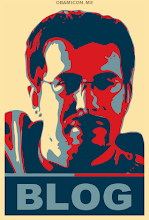AD SAYS FEES COULD INCREASE AGAIN IN THREE YEARS
By STEVEN TAVARES
The Pioneer Sports Editor
The University has contended its plan to move the athletic program to Division II would increase the school’s visibility and encourage campus pride—if only our teams are competitive.
According to budget data compiled by the U.S. Department of Education via the Equity In Athletics Disclosure Act (EIADA), the extra $1.5 million the athletic program would receive through a student fee increase would only place Cal State, East Bay seventh out of 12 California Collegiate Athletic Association (CCAA) schools.
CSUEB Athletics Director Debby DeAngelis projects the 2009 budget—the first year the Pioneers will compete in the CCAA—to be roughly $3.2 million, ranking above San Francisco State, Stanislaus State, Cal Poly Pomona, CSU Monterey Bay, CSU Dominguez Hills and CSU San Bernardino.
“What we said is that we want to be in the top half. Four schools will still have a larger total budget than we do,” said DeAngelis, “The commitment to put us in the top half is being met”
In fact, six schools operated during the 2006-07 school year with a budget greater than CSUEB plans to compete with in 2009.
Sonoma State leads all CCAA schools with a budget last year of nearly $4.4 million and includes one of the nation’s top Division II baseball programs.
They are followed by U.C. San Diego at $4.0 million, Chico State at $3.9 million, Humboldt State at $3.8 million and CSU Los Angeles at $3.7 million.
In addition, DeAngelis said the athletic program will be split from the Department of Kinesiology by 2009. Currently, only 40 percent of coach’s salaries are reflected in the CSUEB budget.
By 2009, the entire coaching expenditure will be solely reflected on the athletic program’s budget, making the current $1.9 million the school reported to the EIADA to be less than it actually seems.
Bill Fusco, the director of athletics at Sonoma State said that salaries and benefits are a huge part of an athletics budget. He said 70 percent of his budget is allocated to coaches.
“The cost of operating an NCAA Division II program really depends on the costs of salaries and benefits of the coaches and administrative staff,” said Fusco.
He believes a Division II program can be competitive on a budget of $2.8-$3 million, not including scholarships.
Sonoma State raised scholarship money solely through fundraising as oppose to the student fee increase used at CSUEB.
“The phrase we use in athletics is a ‘level playing field’. Are we putting ourselves were we have the facilities and the resources and money is just part of it,” said DeAngelis, “Are we funded well enough to level the playing field so that on any given day we can win that game? I think we are.”
DeAngelis said the university is looking to upgrade facilities for the soccer teams and softball.
She also hopes to upgrade the campus swimming pool from 25 yards to the standard 50 meters.
A greater emphasis on wins and losses may ultimately become a larger factor on campus with the move to Division II.
“We’re going into a conference that is extremely successful in Division II. If we can be successful in the conference, we’ll probably be successful in Division II,” said DeAngelis, “We have to get to the point we’re we can compete. I have faith that we have the coaches who can do that and initially we can put the resources in place for that to happen.”
DeAngelis also indicated that coaches are held accountable for maintaining, at least, a .500 winning percentage and that criteria will continue.
With the basic premise that competing in Division II needs to equate to winning, what if the planned budget fails to produce results?
While confidence is high, DeAngelis did not rule out the need to possibly raise student fees in the future or some other type of increased revenue.
“It will be huge if the university continues to grow the way we think it will. That way there would be more money available with more students,” said DeAngelis, “It’s conceivable that we could look for ways to generate more money.”
Thursday, August 14, 2008
Subscribe to:
Post Comments (Atom)

No comments:
Post a Comment